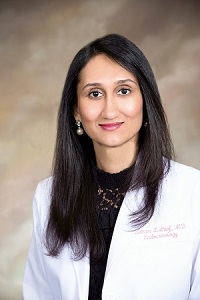Prepare for next pandemic by training leaders
In response to the COVID-19 pandemic and the prospect of others, public health and medical groups are developing training initiatives to increase the numbers of infectious disease and public health specialists across the country.
In response to the COVID-19 pandemic, experts are shoring up the weaknesses it exposed in the U.S. health care system by training both front-line workers and the next generation of leaders.
Response to COVID-19 revealed vulnerabilities in hospitals' capacity to quickly ramp up staffing and equipment levels, as well as systemic failures in providing equitable access to care and timely, evidence-based guidance. Critically, the U.S. lacked a robust public health infrastructure to support and address staffing needs in a coordinated, equitable way, according to a special article on lessons learned from pandemic response at New York's hospitals, published in the Joint Commission on Quality and Patient Safety in September 2022.

At the same time, the disaster highlighted a shortage of hospital staff who were trained in basic epidemic response skills. “Our staffs did everything they could possibly do, but it took a lot of just-in-time training,” said the article's lead author, Mark Jarrett, MD, MBA, MS, FACP, senior health advisor at Northwell Health in New Hyde Park, N.Y. “We didn't have those mechanisms in place to do rapid training that could be rolled out quickly.”
For example, staff who were not used to working in the ICU had to be trained on the spot in techniques like proning, as well as basic life support and mechanical ventilation. The article also identified a lack of crisis management expertise, poor communication, and inequities in care delivery as major contributors to creating an overwhelmed health care system.
In response to such challenges, public health and medical groups are developing training initiatives to increase the numbers of infectious disease (ID) and public health specialists across the country. For example, the CDC's Epidemic Intelligence Service (EIS) and the Infectious Diseases Society of America (IDSA) are planning a pilot joint fellowship program aimed at expanding the pool of experts capable of guiding a pandemic response.
“The COVID-19 pandemic demonstrated clearly that we need a health care workforce trained in both public health and infectious diseases and that understands the intersection between those two areas,” said Wendy Armstrong, MD, professor of medicine and director of the infectious diseases fellowship program at Emory University in Atlanta, one of 11 schools participating in the ID/EIS joint pilot. “This is the kind of training that will put people in positions to lead, whether it be in public health departments, research organizations, or individual communities.”
Linking data to practice
Although COVID-19 exacted a higher toll than other epidemics in recent years, including the West Nile virus, SARS, and H5N1 (avian influenza), novel emerging diseases have been on the rise since 1940, according to an article in the Jan. 6, 2022, JAMA. The trend suggests that more serious emergencies are ahead, the authors noted, creating an urgent need to address the weaknesses observed during the COVID-19 response.
“With increasing frequency, we're going to have strains on the health care system, and we need to be prepared to withstand that strain,” said the article's coauthor Jennifer Nuzzo, DrPH, professor of epidemiology and director of the Pandemic Center at Brown University School of Public Health in Providence, R.I. “The good news is that there are steps we can take now to better manage future challenges.”
Critically, better coordination and communication are needed between national public health leaders and clinicians on the front lines of a health emergency, said Dr. Nuzzo. Early in the pandemic, clinicians had little guidance on questions about access to testing and personal protective equipment, as well as appropriate triaging during surges that stretched clinical resources, because of lack of access to accurate, timely data, she said. There was no coordinated effort at the federal level to collect, analyze, and disseminate data to inform treatment and response as the pandemic progressed.
For example, early in the pandemic, deep racial and ethnic disparities emerged in hospitalizations, but it took some time for states to publish those data, and only a handful of states looked more closely at demographic data on testing, said Dr. Nuzzo. Subsequent analyses revealed that people of Hispanic/Latino ethnicity were least likely to get tested—the first step in the response—and also among the most likely to be hospitalized for or die of COVID-19.
“You have to ask if some of those hospitalizations and deaths could have been averted if we had better data on testing sites' locations, hours, and any barriers to access,” she said. “We need to use data to inform the response in real time.”
During the COVID-19 pandemic, it was more difficult for marginalized and disadvantaged patients to access testing and treatment, said Dr. Armstrong, whose experience includes working at Grady Memorial Hospital, a large, public safety-net hospital in Atlanta.
“Over and over again we saw that COVID outcomes were very much dependent on early access to treatment and testing and places to isolate or self-quarantine,” she said. “Future efforts must look at how we can build more equity into the system.”
Ideally, the country would have a central database and unique patient identifiers that track activities in the health care system, said Dr. Jarrett. A centralized solution would make it easy to track whether or not people contracted COVID-19 after receiving a vaccine, for example, and their progress through the health system.
Similarly, a central data repository would allow federal public health officials to track and monitor essential equipment and supplies, said Dr. Jarrett. It could avoid the shortages seen during COVID-19 by alerting authorities when supplies are running low so they can direct factories to ramp up production.
“If we want to react effectively to the next pandemic and, more importantly, anticipate it,” he said, “we need to put these processes in place now.”
Training physician leaders
The lack of data and coordination between public health officials and clinicians during COVID-19 underscores the need for clinicians trained in both infectious diseases and applied epidemiology, said Byron Robinson, PhD, team lead and senior statistician at the CDC's Epidemiology Workforce Branch, which houses the EIS portion of the program.
“Infectious disease training provides front-line clinical awareness and understanding of infectious disease treatment and transmission, while the EIS component adds applied epidemiology understanding at the population level,” said Dr. Robinson. “Experts trained in both specialties can help identify how to stop transmission before epidemics turn into pandemics.”
Fellows in the four-year ID/EIS program will also become more effective communicators by developing public speaking and presentation skills, said Eric Pevzner, PhD, MPH, chief of the Epidemiology Workforce Branch. The idea is to train public health and clinical leaders who can better engage and educate the public about complex diseases and risk mitigation through storytelling and dynamic data visualizations.
“With this program, fellows will be placed in extraordinary circumstances in the field where they'll lead responses to outbreaks or other investigations and face challenging analytic questions,” said Dr. Pevzner. “They will then have to effectively communicate their results to the media, the lay public, and scientific audiences.”
It's hoped that the joint program will strengthen the pipeline of dual-trained physicians by removing barriers to entry, said Carlos del Rio, MD, FACP, president of IDSA.
“Many infectious diseases students and residents are interested in EIS but have been discouraged in the past by the disconnect between ID fellowship and EIS,” he said. “Our partnership with the CDC creates a one-stop shop for students to apply for both programs.” While the applicant will still need to complete two applications, one for fellowship and one for EIS, the acceptance into both programs will be together, Dr. del Rio explained.
International efforts to tackle future pandemic preparedness also are underway. The Group of 7, or G7 countries (the U.S., Canada, France, Germany, Italy, Japan, and the U.K), recently formed the Pact for Pandemic Readiness, which aims to strengthen early warning systems for effective pandemic prevention, according to the G7 Health Ministries in Berlin. The pact establishes a hub in Berlin to expedite analyzing and disseminating data and aims to train a global network of experts who would collaborate on identifying and mitigating outbreaks at early stages.
“Having multiple centers around the world ready to do research quickly on focused topics is really important,” said Dr. Nuzzo. “These centers will be looking for the next pathogen and could be critical in detecting events early, before a virus starts spreading.”
Ongoing international initiatives include the CDC's Field Epidemiology Training Program, said Dr. Pevzner. This program, on which the EIS fellowship is modeled, has helped train field epidemiologists in more than 80 countries over the past four decades.
“We expect that the G7 pact will provide more resources to expand and support the existing network of field epidemiology programs around the world,” he said.
Addressing disparities
Building a more diverse public health workforce is a key part of addressing the disparities in health care access and delivery seen during the pandemic, said Dr. Robinson. To that end, the CDC adopted recruiting and selection procedures for ID/EIS fellows to ensure a diverse pool of applicants, including training application reviewers and interviewers to be more aware of unconscious bias and promote diversity and equity in the selection process.
Geographic diversity was an important criterion in selecting the first 11 institutions to participate in the joint fellowship program, added Dr. Pevzner. Organizers intentionally sought out programs located in areas with underserved or marginalized populations, such as the University of New Mexico Health Sciences Center in Albuquerque, which has strong ties working with Indigenous populations.
Fellows also have the option of completing all four years of the program in one location, said Dr. Armstrong. For example, someone who did an infectious diseases fellowship at the University of New Mexico could potentially complete the EIS portion at a local health department instead of moving to the CDC's Atlanta headquarters.
“That fellow is then likely to be more interested in and better prepared for a career focused on serving Indigenous communities,” she said.
At the same time, the CDC has revamped its EIS fellowship curriculum using a health equity lens, said Dr. Robinson. For instance, instruction on designing a research study now includes guidance on how to responsibly engage affected communities and better consider their needs and input when collecting data and measuring variables. The training is meant to ensure that any actions or recommendations resulting from a study are inclusive and appropriate to the population affected.
Having more experts in diverse areas of the country who understand both public health and applied epidemiology is central to addressing the disparities in vaccine uptake and testing that were documented with COVID-19, said Dr. Nuzzo. For example, local experts could help coordinate and consult on community influenza vaccination exercises aimed at evaluating access to testing and preparing for future emergencies.
Removing access barriers is another essential part of putting equity at the forefront of future responses, said Dr. Armstrong.
“We need to have public health officials, mobile vans, and pop-up clinics on the ground in the communities that are most affected,” she said. “Besides more public health leaders, we need to ramp up public health at all levels, from departmental staff to disease intervention specialists to folks that do contact tracing.”
More education and training initiatives are needed across the health care system while the lessons from COVID-19 are still top of mind, noted Dr. Jarrett, who recently became chair of the U.S. Healthcare and Public Health Sector Coordinating Council, a national public-private sector partnership that focuses on critical infrastructure protection and risk management.
“We need to train people in managing pandemics and adopt standards across hospitals and regions so that we're providing consistent, evidence-based care,” he said. “COVID taught us that it isn't just the virus itself that affects our ability to deliver care but our ability to handle related issues like staffing, supplies, and cybersecurity.”





